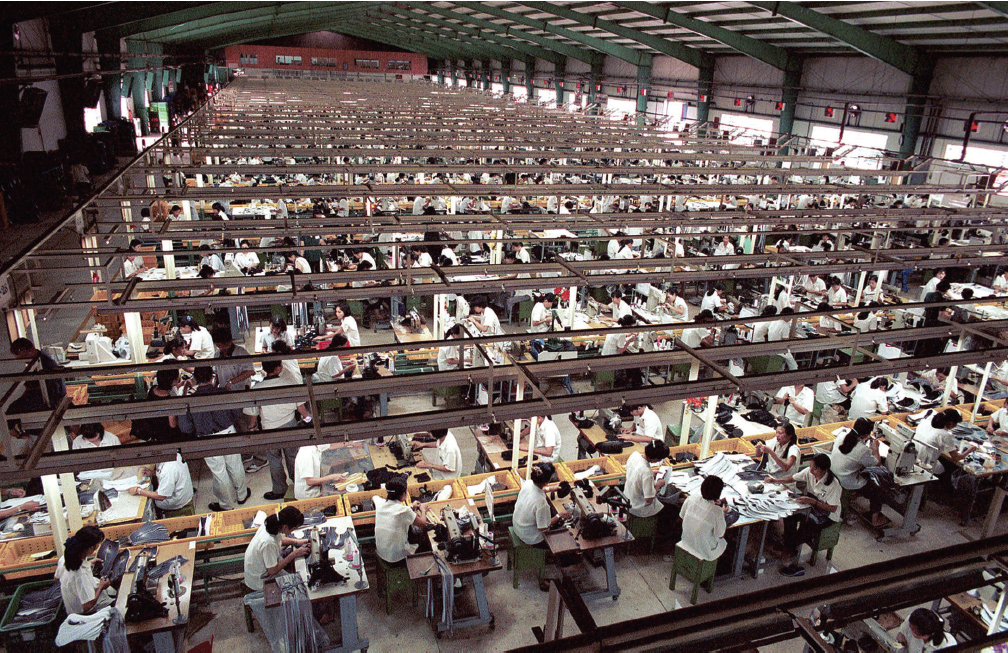America’s History: Printed Page 1009
America: A Concise History: Printed Page 915
America’s History: Value Edition: Printed Page 893
An Era of Globalization
Americans have long depended on foreign markets to which they export their goods and have long received imported products and immigrants from other countries. But the intensity of international exchange has varied over time. The end of the Cold War shattered barriers that had restrained international trade and impeded capitalist development of vast areas of the world. New communications systems — satellites, fiber-optic cables, global positioning networks — were shrinking the world’s physical spaces to a degree unimaginable at the beginning of the twentieth century. Perhaps most important, global financial markets became integrated to an unprecedented extent, allowing investment capital to “flow” into and out of nations and around the world in a matter of moments.

International Organizations and Corporations International organizations, many of them created in the wake of World War II, set the rules for capitalism’s worldwide expansion. During the final decades of the Cold War, the leading capitalist industrial nations formed the Group of Seven (G7) to manage global economic policy. Russia joined in 1997, creating the Group of Eight (G8). The G8 nations — the United States, Britain, Germany, France, Italy, Japan, Canada, and Russia — largely controlled the major international financial organizations: the World Bank, the International Monetary Fund (IMF), and the General Agreement on Tariffs and Trade (GATT). In 1995, GATT evolved into the World Trade Organization (WTO), with nearly 150 participating nations that regulate and formalize trade agreements with member states.
As globalization accelerated, so did the integration of regional economies. To offset the economic clout of the European bloc, in 1993 the United States, Canada, and Mexico signed the North American Free Trade Agreement (NAFTA). This treaty, as ratified by the U.S. Congress, envisioned the eventual creation of a free-trade zone covering all of North America. In East Asia, the capitalist nations of Japan, South Korea, Taiwan, and Singapore consulted on economic policy; as China developed a quasi-capitalist economy and became a major exporter of manufactures, its Communist-led government joined their deliberations.
International organizations set the rules, but globalization was made possible by the proliferation of multinational corporations (MNCs). In 1970, there were 7,000 corporations with offices and factories in multiple countries; by 2000, the number had exploded to 63,000. Many of the most powerful MNCs were, and continue to be, based in the United States. Walmart, the biggest American retailer, is also one of the world’s largest corporations, with 1,200 stores in other nations and more than $400 billion in sales. Apple, maker of the iPhone and iPad, grew spectacularly in the 2000s and now has more than $60 billion annually in global sales. The McDonald’s restaurant chain had 1,000 outlets outside the United States in 1980; twenty years later, there were nearly 13,000, and “McWorld” had become a popular shorthand term for globalization.
Globalization was driven by more than a quest for new markets. Corporations also sought ever-cheaper sources of labor. Many American MNCs closed their factories in the United States and outsourced manufacturing jobs to plants in Mexico, Eastern Europe, and especially Asia. The athletic sportswear firm Nike was a prime example. By 2005, Nike had established 700 factories worldwide that employed more than 650,000 workers, most of whom received low wages, endured harsh working conditions, and had no health or pension benefits. Highly skilled jobs were outsourced as well.
Financial Deregulation One of the principal differences between this new era of globalization and previous eras has been the opening of national financial and currency markets to investment from around the world. The United States and Britain led the way. Both countries came under the sway of powerful political forces in the 1980s calling for the total deregulation of banks, brokerage houses, investment firms, and financial markets — letting the free market replace government oversight. Together, the United States and Britain led a quiet revolution in which investment markets around the world were gradually set free.
Financial deregulation led to spectacular profits for investors but produced a more fragile, crash-prone global economy. On the profit side, financial-industry profits in the United States rose from less than 10 percent of total business profits in the 1950s to more than 40 percent beginning in the 1990s. But the costs were becoming clear as well: the bankruptcy of the American savings and loan industry in the 1980s; the “lost decade” in Japan in the 1990s; the near bankruptcy of Russia in the late 1990s and of Argentina in 2001; the 1997 Asian financial crisis, centered in Thailand and Indonesia; and the collapse of nearly the entire global economy in 2008 (see “Violence Abroad and Economic Collapse at Home”). These and other episodes dramatized the extraordinary risks that financial globalization has introduced.
COMPARE AND CONTRAST
Question
What were the potential benefits and risks of globalization to the United States and other countries?